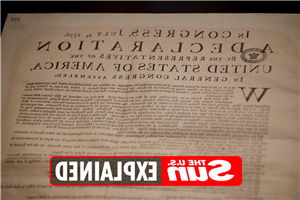What is The 25th Amendment?

THE 25th Amendment guarantees who would take office if something happened to the president or vice president.
The 25th Amendment answers a series of questions having to do with the transfer of power in the office of president and vice president in certain circumstances.
What is the 25th Amendment?
The 25th Amendment has four sections that answer concerns about filling offices in case of death, illness, resignation, etc.
Section 1 states that in case a president dies, is removed from office, or resigns, the vice president takes over the office of president.
Section 2 allows a president to nominate a replacement for their vice president in case of a vacancy that has to be then approved by the House and the Senate.
Sections 3 and 4 determine what will occur if the current president is too unfit to discharge the duties of the office due to illness or injury.
Section 3 allows the president to transfer their authority temporarily to the vice president by submitting a written declaration explaining that they are currently unfit to fulfill their duties.
They can then submit a second written declaration that assures the president is now fit to continue their responsibilities.
Section 4 addresses a situation when an unfit president refuses to step aside or relinquish their power.
In this case, the vice president along with a majority of the Cabinet or other group assigned by Congress determine that the president is “unable to discharge the powers and duties of his office" and the vice president becomes the acting president.
If the president pronounces himself able, the group has four days to agree or disagree.
If they agree, the president retakes power. If they disagree, Congress votes for the vice president to continue as acting president or not.
There is ambiguity within this amendment as what qualifies as a presidential disability, which has not been clarified in the constitution.
This amendment changed a portion of Article II Section I of the Constitution which stated that the vice president would take over the president's position if they were inable to discharge their duties, but did not clarify how or why this would occur.
Thus, Section 4 became a more detailed and affirmative version of Article II Section I.
When has the 25th Amendment been utilized?
The 25th Amendment has been utilized multiple times by US presidents and vice presidents.
When William Henry Harrison died in office in 1841, vice president John Tyler became president, leading to the ratification of this amendment to officially make this transfer of power a rule.
Two years before the amendment was passed, John F Kennedy died in office and Lyndon B Johnson took over his role.
This also occurred when Franklin Delano Roosevelt died in 1945 and vice president Harry Truman was sworn in just two hours later.
When Richard Nixon resigned in 1974, Gerald Ford stepped into the office.
Before that, Gerald Ford became Vice President through Section 2 after Vice President Spiro Agnew resigned and when Ford became president, he nominated Nelson Rockefeller to be his vice president.
Under Section 3, President Ronald Reagan and George W. Bush transferred authority to their Vice Presidents for a matter of hours while they underwent planned surgeries.
When was the 25th Amendment ratified?
The 25th Amendment was passed by Congress on July 6, 1985.
However, it was not ratified until February 10, 1967.
Source: Read Full Article

